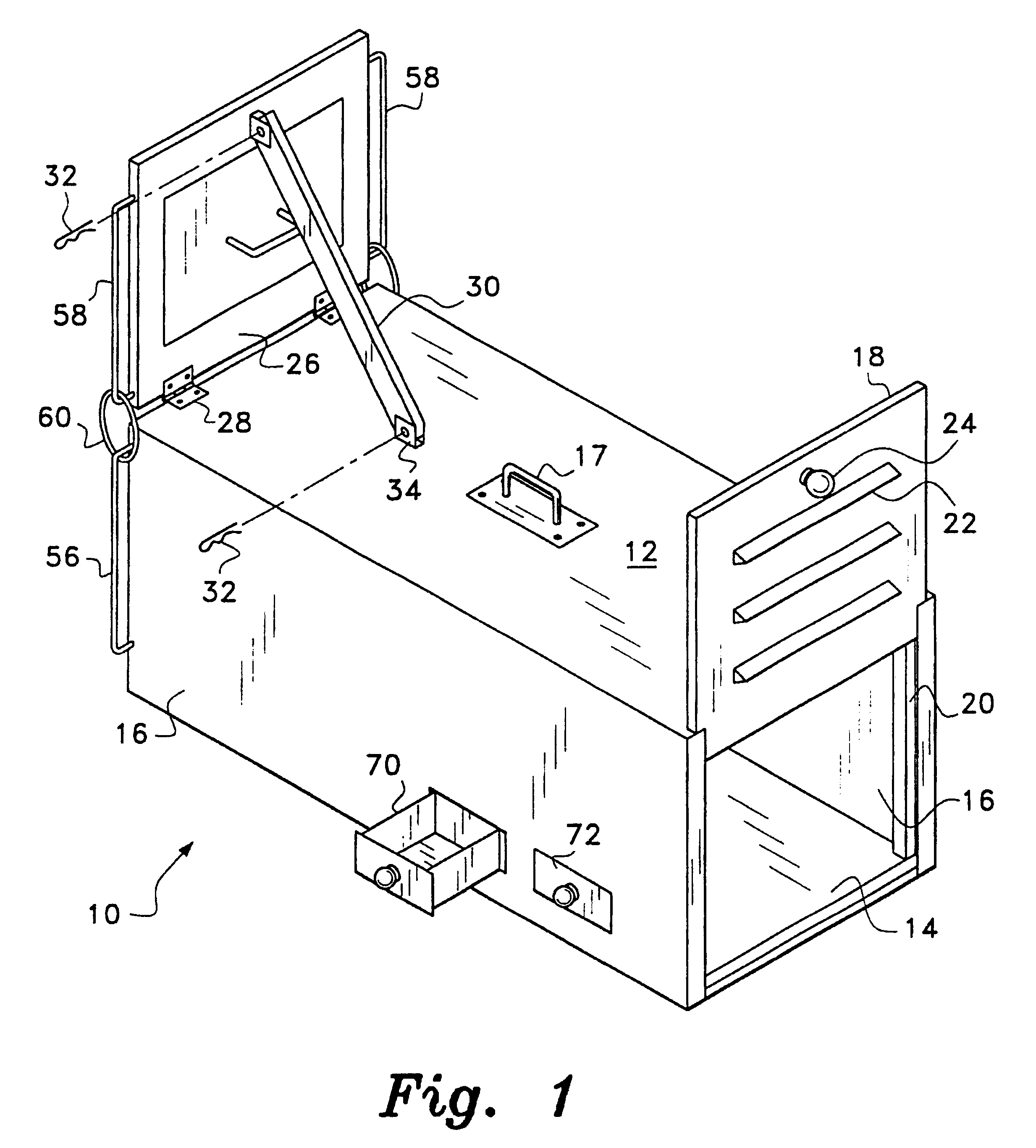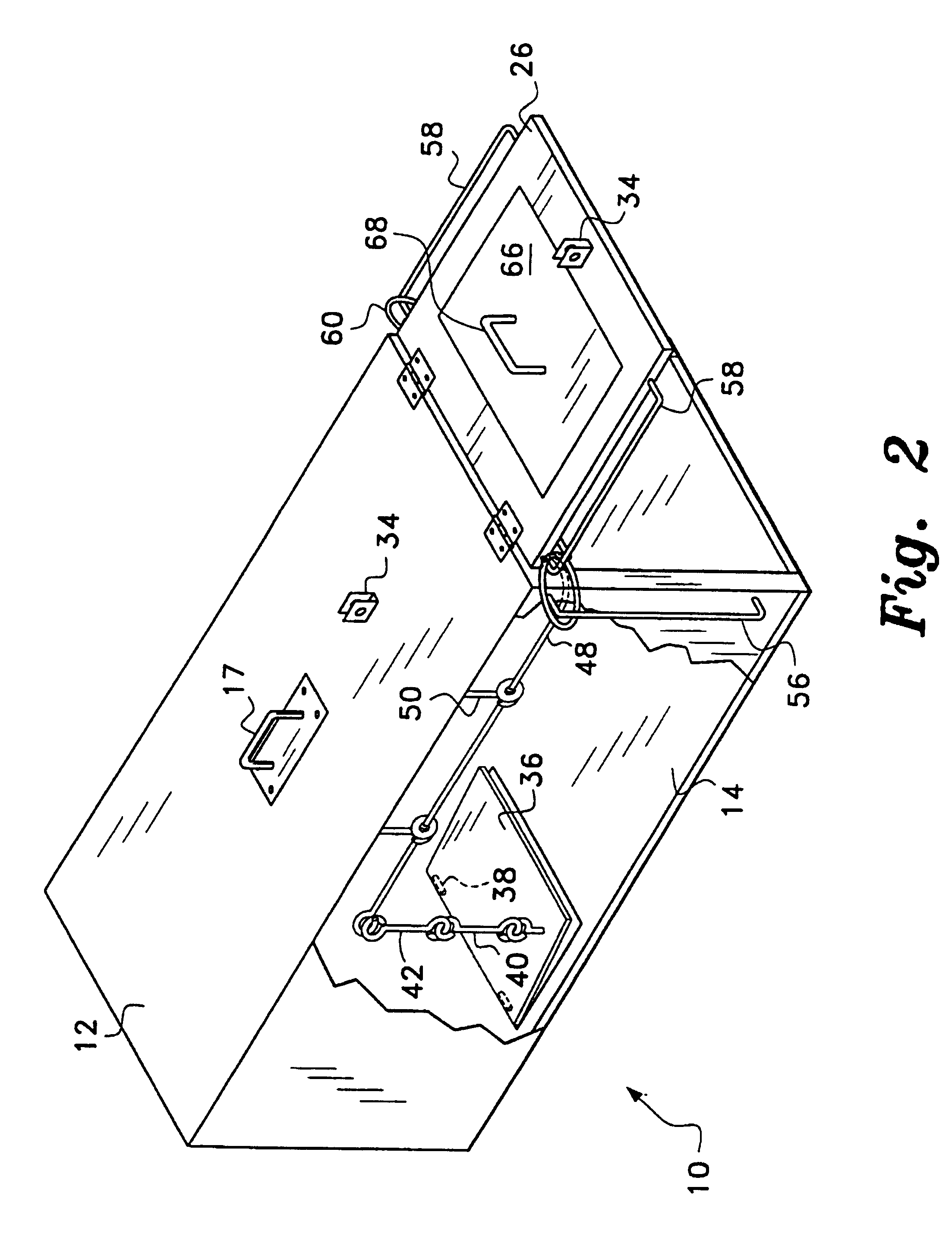Cat trap/carrier/cage
a carrier and cage technology, applied in the field of cat traps/carriers/cages, can solve the problems of not having some of the amenities of a temporary living facility, device not operating without direct human control, size and design appear to be insufficient,
- Summary
- Abstract
- Description
- Claims
- Application Information
AI Technical Summary
Benefits of technology
Problems solved by technology
Method used
Image
Examples
Embodiment Construction
The present invention is a combination cat trap / carrier / cage, designated generally as 10 in FIGS. 1 through 6 and hereinafter referred to as the "cat trap". The cat trap 10 may be used as a trap for trapping feral cats, as a carrier for transporting a cat, or as a cage for temporarily housing a cat. The cat trap 10 has a unique combination of features, including a guillotine sliding door at one end, a trap door rotating about horizontally disposed hinge pins, and a squeeze panel built in to the trap door.
As shown in FIG. 1, the cat trap 10 is an elongated, box-shaped, rectangular parallelepiped structure made from an opaque, thermally insulated material. The cat trap may be made from a thermoplastic material, and may have a double wall with insulating material disposed between the walls. The roof 12, floor 14, and two opposing side walls 16 of the structure are fixed. The roof may have a carrying handle 17 disposed thereon to enable the cat trap 10 to be used as a carrier for transp...
PUM
 Login to View More
Login to View More Abstract
Description
Claims
Application Information
 Login to View More
Login to View More - R&D
- Intellectual Property
- Life Sciences
- Materials
- Tech Scout
- Unparalleled Data Quality
- Higher Quality Content
- 60% Fewer Hallucinations
Browse by: Latest US Patents, China's latest patents, Technical Efficacy Thesaurus, Application Domain, Technology Topic, Popular Technical Reports.
© 2025 PatSnap. All rights reserved.Legal|Privacy policy|Modern Slavery Act Transparency Statement|Sitemap|About US| Contact US: help@patsnap.com



